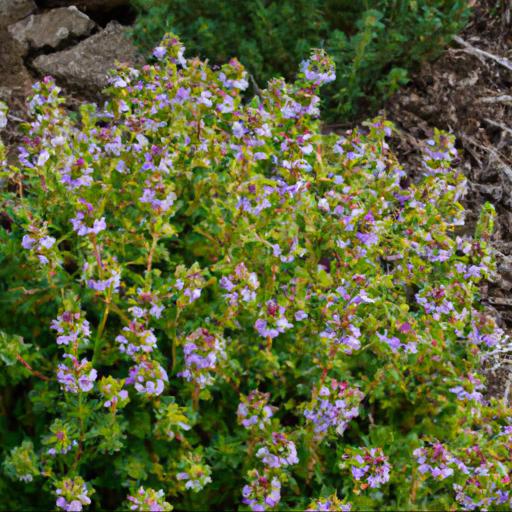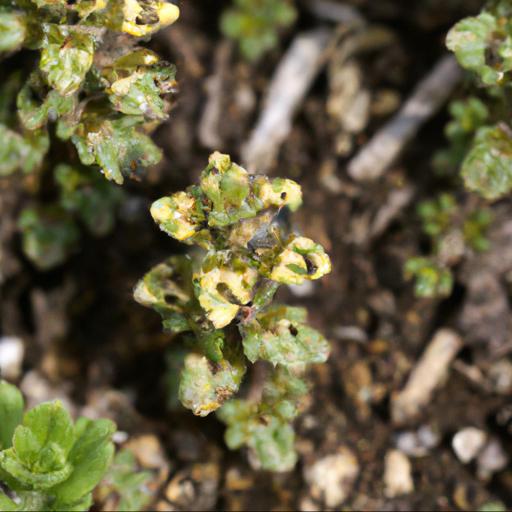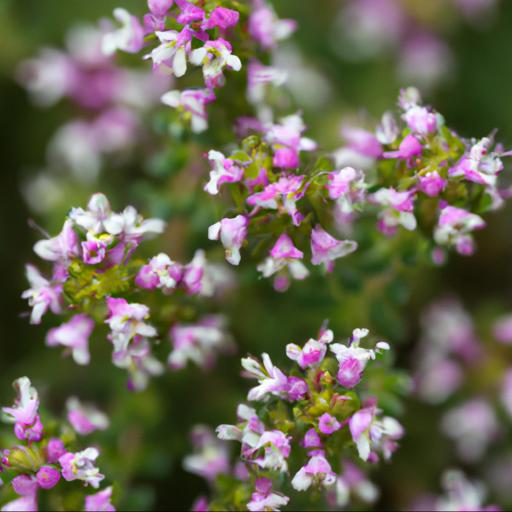Thymus citriodorus variegata, commonly known as variegated lemon thyme, is a unique and attractive herb that adds beauty and flavor to any garden. It is a low-growing, evergreen perennial with small, dark green leaves with yellow stripes. The leaves are fragrant and have a strong citrus aroma, making it a great choice for flavoring soups, stews, and sauces.
Variegated lemon thyme is a hardy plant that is drought-tolerant, deer-resistant, and easy to grow. It is also a great choice for pathways, rock gardens, and other areas where it can be enjoyed up close.
With its unique appearance and citrusy flavor, variegated lemon thyme is a must-have in any herb garden.
Benefits of growing thymus citriodorus variegata

. Growing a variety of Thymus citriodorus variegata in your garden can bring a wealth of benefits to your landscape.
An evergreen perennial native to the Mediterranean, this hardy ornamental plant is both low maintenance and visually appealing. Thymus citriodorus variegata is a great choice for gardeners looking to introduce a splash of wonderfully vibrant colour to their garden beds. In spring and summer, this plant produces grey-green foliage with striking yellow-white margins.
The combination of the foliage’s variegated hues with the small pink or purple flowers adds an eye-catching variety of texture and colour to your garden. One of the greatest benefits to growing Thymus citriodorus variegata is that it is incredibly low maintenance. Not only is this plant pet-friendly, but it is also highly tolerant of drought, as well as extreme temperatures and high winds.
This plant doesn’t require a lot of pruning or fertilizing, and only needs to be watered in periods of extreme drought. Additionally, this plant can survive in almost any type of soil, including poorly drained and nutritionally poor soils.
For these reasons, this hardy perennial can survive in both low-floor and high-elevation landscapes, making it an ideal choice for gardeners who don’t have the time or energy to devote to meticulous pruning and nurturance. All in all, Thymus citriodorus variegata is a great choice for introducing visual interest and a low-maintenance flourish to your garden.
With its grey-green and yellow-white foliage, small fragrant flowers, and ability to survive in almost any type of soil and climate, this hardy evergreen has the potential to bring a wealth of benefits to your landscape.
Tips for planting and caring for thymus citriodorus variegata

As a UK gardening expert, I’m here to give you my advice on planting and caring for Thymus citriodorus variegata – aka marbled lemon thyme. This low-maintenance perennial plant is relatively easy to grow, with the added bonus of providing a fragrant addition to your garden with its heady scent. For planting, it’s best to use a mix of coarse sand, and gritty loam or gritty compost in an area that receives a lot of sunlight.
Marbled lemon thyme isn’t picky when it comes to soil and can even be grown and will thrive in chalky soil, though you may need to supplement the soil with a layer of compost or soil improver to ensure adequate drainage and nutrients. Plant your thyme in a spot that receives at least 6-7 hours of sunshine daily and keep the soil moist.
Caring for marbled lemon thyme is fairly straightforward. Make sure to provide it with plenty of water each day, either through rain or manual watering. If you need to fertilise, use a low nitrogen liquid feed to avoid over-fertilising and allow the plant to continue to grow and flower in the warmer months of the year.
When it comes to pruning, don’t be afraid to prune your marbled lemon thyme lightly – the difference can be seen in volume, shape and size of the plant. Overall, with the correct planting and care, marbled lemon thyme can be a rewarding and fragrant addition to any garden.
When given the correct growing conditions and adequate watering, it’s sure to see you reap the rewards of this wonderfully aromatic and colourful plant.
Common pests and diseases of thymus citriodorus variegata

Thymus citriodorus variegata, commonly known as lemon thyme, is a popular evergreen perennial that is easy to maintain and has some of the most fragrant foliage of any herb. The bush-like plants have a bright yellow-green foliage and produce an abundance of tiny pink flowers in the late summertime. Like most herbs, lemon thyme is very susceptible to various pests and diseases.
Among the most common pests are snails and slugs, which are attracted to its succulent leaves and stems. To protect your lemon thyme from mollusc damage, frequent hand weeding of the area should be done, particularly in the springtime when the plant is just emerging.
Using a combination of nematodes, mulch and natural deterrents, such as beer traps, can also help reduce the risk of slug damage. Additionally, lemon thyme can suffer from fungal diseases such as Botrytis, powdery mildew, and rust. Pruning away infected leaves and actively removing any fallen leaves from the soil can help to reduce the risk of these diseases.
During humid weather and in areas with poor air circulation, spraying the plant with a copper-containing fungicide can help reduce the risk of infection. Regular feeding with a seaweed-based soil conditioner during the growing season will also help to promote healthy foliage.
When it comes toThymus citriodorus variegata care, being aware of the common pests and diseases will help you to keep this beautiful and fragrant herb in tip-top shape. By regularly tending to your lemon thyme and taking appropriate preventative measures, you can enjoy its pleasant flowers and foliage for many years to come.
Final Touch
Thymus citriodorus variegata, commonly known as variegated lemon thyme, is an attractive, evergreen herb with fragrant, lemon-scented leaves and pinkish-purple flowers. It is a popular choice for herb gardens, rock gardens, and as an edging plant.
Variegated lemon thyme is easy to grow and maintain, and its lemon-scented leaves can be used fresh or dried in cooking. It is also a great choice for attracting beneficial insects to the garden.
FAQ
What is the scientific name of Thymus citriodorus variegata?
The scientific name of Thymus citriodorus variegata is Thymus citriodorus ‘Variegata’.
What are the benefits of growing Thymus citriodorus variegata?
The benefits of growing Thymus citriodorus variegata include its attractive foliage, its ability to attract pollinators, its ability to tolerate a range of soil types, and its resistance to pests and diseases.
How can Thymus citriodorus variegata be propagated?
Thymus citriodorus variegata can be propagated through stem cuttings or division of the existing plants.
What is the ideal climate for Thymus citriodorus variegata?
The ideal climate for Thymus citriodorus variegata is a warm, sunny spot with well-draining soil. It prefers temperatures between 65-75°F (18-24°C) and can tolerate some frost. It also needs plenty of sunlight and regular watering.
What are the common pests and diseases of Thymus citriodorus variegata?
Common pests and diseases of Thymus citriodorus variegata include powdery mildew, aphids, spider mites, and root rot.
How can Thymus citriodorus variegata be used in cooking?
Thymus citriodorus variegata can be used in cooking as an herb to add a citrusy flavor to dishes. It can be used fresh or dried in marinades, dressings, sauces, and soups. It can also be used to flavor meats, fish, and vegetables.

